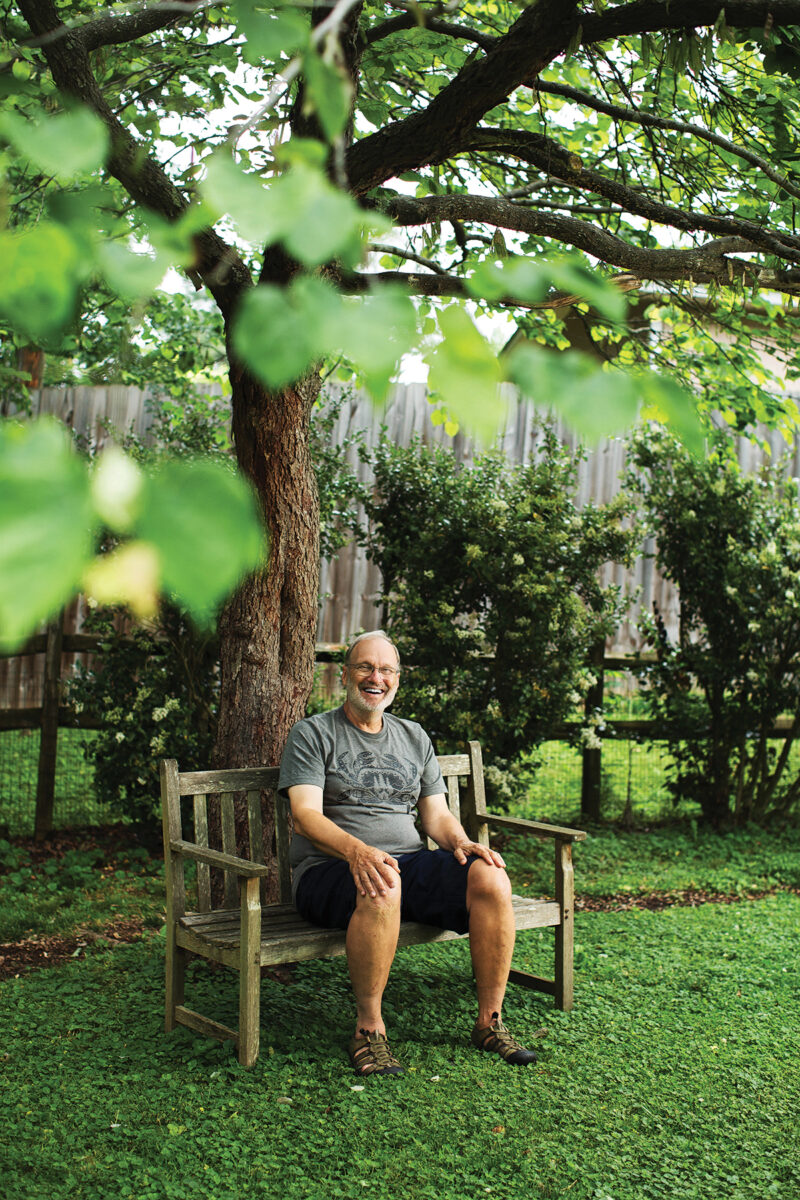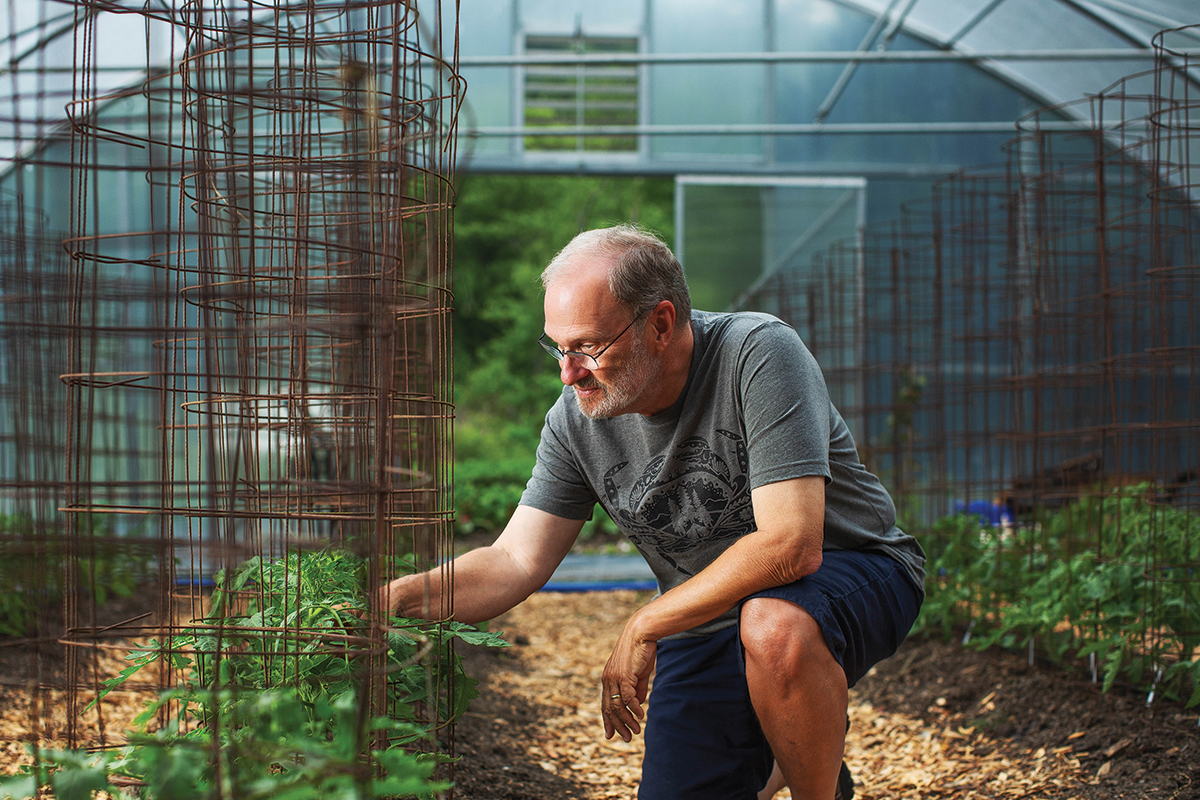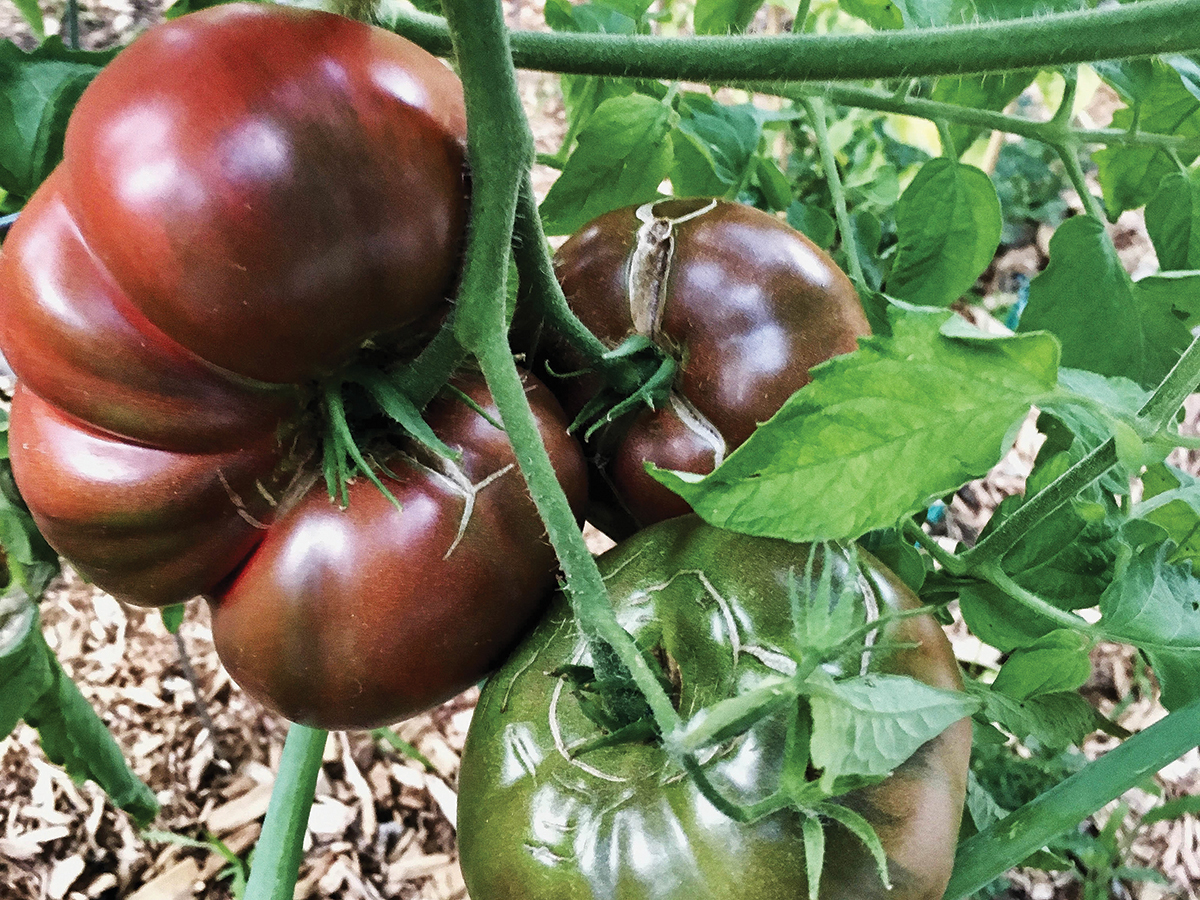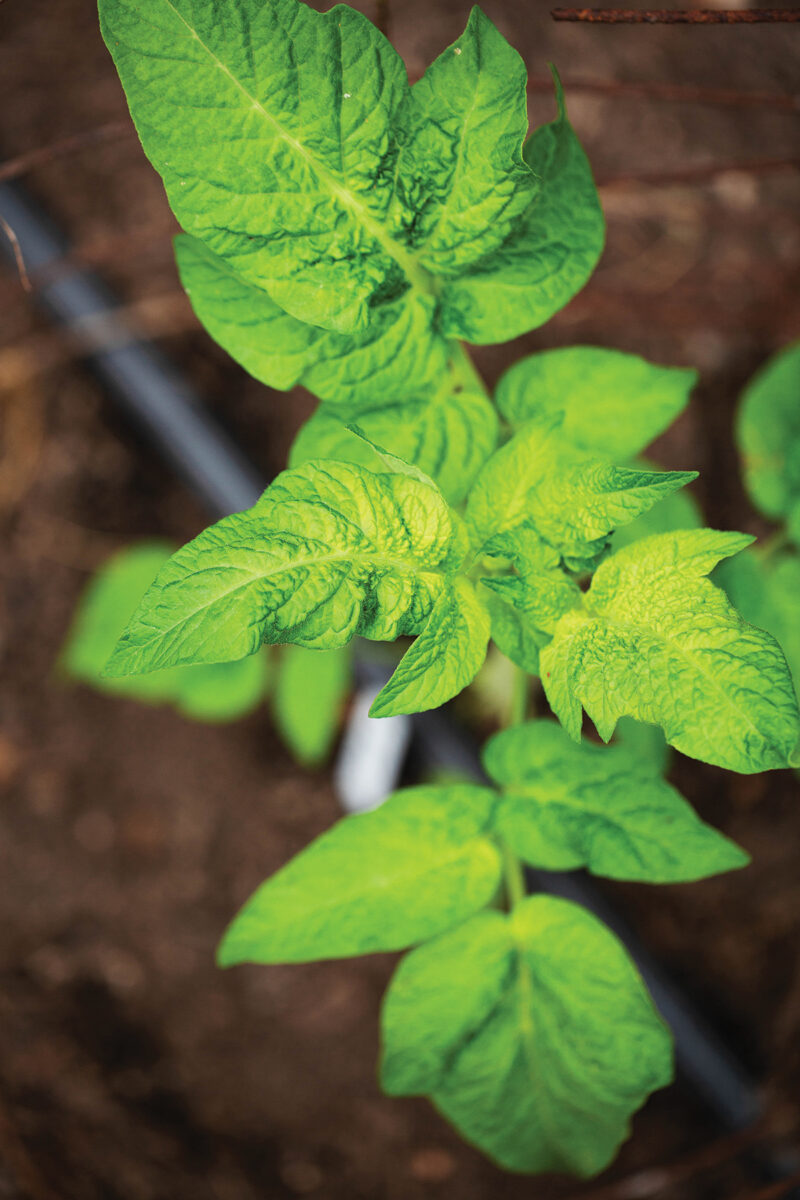Craig LeHoullier sows his expertise in Western North Carolina

NC Tomato Man Craig LeHoullier gained fame in Raleigh but is still teaching and workshopping from his new home in Hendersonville.
Photo by Colby Rabon
Henderson County, a leading commercial producer of tomatoes, is now also home to a leader in the homegrown, heirloom-tomato movement. Gardner, author, and educator Craig LeHoullier (aka “NC Tomato Man”) graduated from Dartmouth College with a PhD in chemistry, and after a 25-year career in pharmaceuticals, retired and began writing books about his favorite pastime.
His first, Epic Tomatoes: How to Select and Grow the Best Tomatoes of All Time (Storey Publishing, 2014), has sold more than 80,000 copies. He followed it with Growing Vegetables in Straw Bales: Easy Planting, Less Weeding, Early Harvests (Storey, 2016). LeHoullier moved to Hendersonville in 2020, and is currently working on a third book focused on the Dwarf Tomato Breeding Project. That program, which he co-founded in 2005, is a global, all-volunteer tomato-breeding collaborative that has bred more than 150 species. “Dwarf” refers to the diminutive size of the plant — suitable for container gardening in small spaces — not the fruit. Prior to the project, only a handful of these compact varieties were available in the marketplace.
However, LeHoullier is still best known for introducing gardeners to one of the most popular heirloom tomatoes grown and sold today – the Cherokee Purple – which is included in the Smithsonian’s American Museum of Natural History Victory Garden.

Photo by Colby Rabon
How did you popularize the Cherokee Purple?
I was gardening in Pennsylvania and doing lots of seeds swaps with people who knew I liked to focus on heirloom varieties. John D. Green, from Sevierville, Tennessee, sent the seeds to me with a letter saying, “Here are seeds a friend gave me that they claim are of Cherokee Nation origin and are from a tomato about 100 years old.” He decided I was the guy who would know what to do with them because I’m kind of a tomato historian and genealogist. I grew them, they were really tasty and that unusual color, so I named them Cherokee Purple. Then I sent my seeds to the Southern Exposure Seed Exchange and they introduced them in 1993. Later I got a chocolate and a green mutation.
How did John Green come by them?
He told me he got them from Jean Greenlee in Rutledge, Tennessee, and she got them from her grandfather, who got them from the Cherokee Nation in the 1880s or 1890s. These tomatoes do really well here in Western North Carolina, but if the people of the Cherokee Nation and others hadn’t shared them, we may not have them today. It shows how fragile all these heirloom varieties are, because if any of those links are broken, they might be lost forever. Personally, without receiving and naming that variety, I may not have received notoriety and written the Epic Tomatoes book.

Today many companies sell “Cherokee Purple tomatoes,” but how can gardeners find ones that are closest to the originals you named?
That’s a good question, because MIT obtained seeds sold as Cherokee Purple tomatoes from lots of different sources and did DNA sequencing on them. Only about 30 percent of what they tested were actually authentic.
Is that due to intentionally misleading marketing?
The sellers probably don’t realize what they have, because genetic sequencing is too expensive for most seed companies to do. But I can tell you that the primary sources for authentic Cherokee Purple tomato seeds are Seed Savers Exchange, Southern Exposure Seed Exchange, Johnny’s Selected Seeds, and my personal favorite — Victory Seeds.
Tell us about your straw-bale gardening.
When I lived in Raleigh, the trees took away the sun, so I used the driveway to garden with containers and straw bales, which I’m still doing. Last year I grew 60 pounds of tomatoes from one straw bale. If you can grow it in the ground you can grow it equally well in a bale or container, and some plants actually do better. You just have to use good quality potting soil, not the kind from box stores, and you may have to water more.

The NC Tomato Man is sought far and wide for his historical and genealogical knowledge of his subject, as well as his horticultural advice.
Photo by Colby Rabon
Your passion is to help teach everyone to be a more successful gardener, isn’t it?
Yes — I do everything I can to teach other people what I know.
Almost every Thursday or Friday, I do a show-and-tell on Instagram Live, and those shows are archived for people to access later. I live close to the Veterans Healing Farm and also do a series of talks there for free to support them. And I was just invited to give a talk at Sow True Seed in Asheville. I don’t actively promote myself, I never was good at that, but I invite people to reach out to me.
Craig LeHoullier, Hendersonville, craiglehoullier.com, @nctomatoman on IG. LeHoullier will speak at “Tomato Day” on Saturday, July 22, at Hendersonville Farmers Market (650 Maple St., hendersonvillenc.gov); and on Wednesday, Aug. 30, at Sow True Seed (243 Haywood St., sowtrueseed.com).
